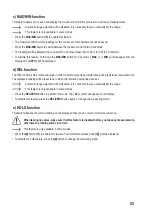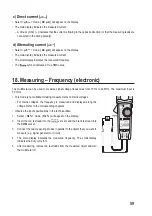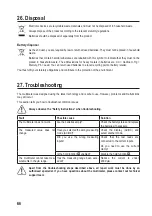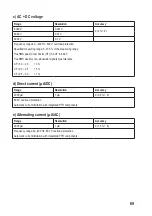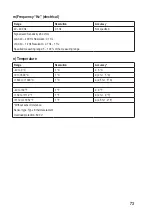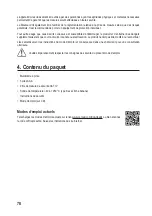
63
22. Testing – Diode
Make sure that all objects to be measured (including circuit components, circuits and component
parts) are disconnected and discharged.
1. Select < > mode. [ V ] will appear on the display.
2. Insert the red test lead into the
socket and the black test lead
into the COM socket.
3. Check the test leads by connecting the two test probes together. A value
of approx. 0.000 V should be shown.
4. Connect the two test probes to the object that you want to measure
(diodes).
5. The main display indicates the measured continuity voltage (“UF”) in
Volts (V).
- [ OL ] indicates that the diode is reverse-biased or defective. Try
taking the measurement again in the opposite polarity.
6. After measuring, remove the test leads from the measured object and
turn the multimeter off.
23. Testing – Continuity
Make sure that all objects to be measured (including circuit components, circuits and component
parts) are disconnected and discharged.
1. Select < > mode. [ ] will appear on the display.
2. Insert the red test lead into the
socket and the black test lead
into the COM socket.
3. If the measured resistance is equal to or less than 10 Ω, the multimeter
will beep to indicate continuity.
- The continuity test measures resistances of up to 600 Ohm.
- [ OL ] (overload) indicates that the measuring range has been excee-
ded or that the circuit was disconnected.
4. After measuring, remove the test leads from the measured object and
turn the multimeter off.





